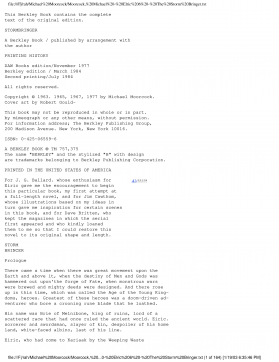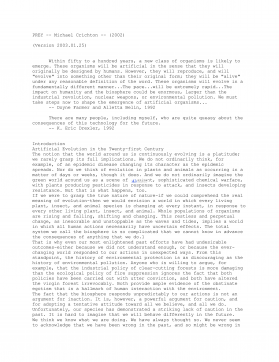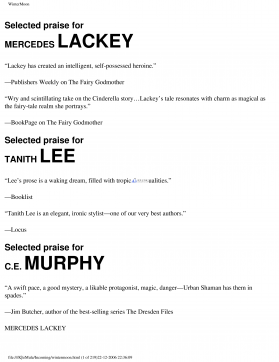
are a sub-class of SPCs with orbital periods .20 years and
pro-grade low orbital inclinations .40◦, while dynami-
cally new comets are a sub-class of LPCs with original or-
bital semi-major axis values &104au. Generally speaking,
the source of LPCs is the Oort cloud while the Kuiper belt
feeds the population of SPCs. Notably Halley-type comets
(HTCs) have historically often been lumped with SPCs, but
most of them are likely to be highly-evolved (in the dynam-
ics sense) objects from the Oort Cloud. Thus they are more
closely related to the LPCs. There are also different opin-
ions on the meaning of the term ’Oort Cloud comet’; e.g.,
it may only include dynamically new comets, or it may in-
clude all LPCs and HTCs that were in the Oort Cloud any
time in the past.
Measurements of large populations from single plat-
forms and the same, or similar, instrumentation provide
a basis for comparative samples, in contrast with compi-
lations (c.f. A’Hearn et al. 1995, Lisse et al. 2020 and
A’Hearn et al. 2012). Such samples of cometary physical
properties may be targeted, such as narrow-band filter sur-
veys (cf. Schleicher and Farnham 2004) or spectroscopic
surveys (cf. Dello Russo et al. 2016), or serendipitous ob-
servations, such as the data obtained with many ground-
based or space-based sky surveys1. These two categories
are significantly different in the selection of the objects ob-
served, and how representative the samples are of the back-
ground populations.
In the first case of targeted samples, known solar-system
object targets are selected based on their optical brightness,
and were discovered often by sky surveys. They are of-
ten observed at preferred geometries (opposition, for exam-
ple, for ground based telescopic surveys) and detected while
they are most active. As such, there are potential selection
biases in the sample that may skew projection of behavior
or physical properties of the base population. For targeted
observations the observing time can be selected to sample
the points through a comet’s orbit where the expected lev-
els of activity are best matched to the physical property of
interest. For example, optical surveys of comets at aphelion
may provide more accurate absolute magnitude values of
the nucleus, leading to better derived reflectances if the size
of the body is known. Alternatively, a more comprehensive
inventory of gas species may be derived at perihelion where
so-called hyper-volatiles and water-related species are re-
leased, and following a comet through its orbit may reveal
when particular species dominate the activity.
1.1. Survey Discoveries of Comets
Prior to the 1990s, comets were generally discovered ei-
ther in large photographic plate exposures or by individuals
that visually scanned the sky, often employing specialized
telescopes or binoculars with fast optics. In the late 1980s
1Here sky survey refers to a survey which covers regions of the inertial
frame, or background, sky with target coordinates fixed in the equatorial,
ecliptic, or galactic coordinate frames, as opposed to moving targets (or
solar system objects).
and early 1990s, digital cameras began to be employed in
regular searches of the sky for solar system objects (cf.
Scotti et al. 1991) with a handful of early comet discoveries.
In addition, astrophysical sky surveys were conceived to
identify transient behavior, like supernova events, in extra-
solar-system objects. With the advent of the earliest digital
sky surveys, the automated surveys began to make signifi-
cant contributions in the number of comet discoveries in the
mid-1990s. These foundational surveys employed Charge-
Coupled Device (CCD) cameras with fields of view that by
today’s standards would be quite modest, on the order of a
degree on a side (c.f. Pravdo et al. 1999), and rapidly began
to outpace other means of discovery.
The efforts to detect solar system objects have been
largely driven by the intent to discover and characterize
Near Earth Objects (NEOs). Observing cadences, point-
ing strategy, and approaches to analysis were therefore
optimized or prioritized towards these NEO-related goals.
These efforts have been remarkably effective, and discovery
of more than 83% of the known NEOs has been the result of
these efforts (Landis and Johnson 2019). As a means of dis-
covering comets, the NEO search programs have also been
effective, not only with the comets that are a component of
the NEO population, but also with more distant comets.
As of September 30, 2021, approximately 3586 comets
had been discovered, as registered by the Jet Propulsion
Laboratory (JPL) small bodies database.2A summary of
leading discovery platforms is provided in Table 1. Ac-
cording to the database, 41%of the comet discoveries listed
were discovered by the Solar and Heliospheric Observa-
tory (SOHO; with the SWAN and LASCO instruments3)
or the Solar Terrestrial Relations Observatory (STEREO)
spacecraft. In total, including these surveys, over 71% of
comet discoveries up to October 2021 have been made by
sky surveys. It is worth noting that the Minor Planet Cen-
ter count (∼4430 comets as of September 30, 2021), and
future counts in the near term, are likely to be higher, as
a significant remainder of the data from the SOHO space-
craft have yet to be processed and the JPL number includes
only those comets that have been observed by other non-
solar-observing platforms in addition. Figure 1 shows the
annual number of discoveries and observations of objects
by sky surveys reported to the MPC and listed in the JPL
database. The drop-off in the discoveries near 2010 coin-
cides with the curtailment of sun-pointing spacecraft survey
data by the MPC, which has been recently resumed (Bat-
tams and Boonplod 2020), though has not yet encompassed
the multi-year backlog (Battams and Knight 2017).
1.2. Survey Observations
Along with a marked increase in the number of comet
discoveries brought through ground-based surveys, the
number of observations of comets has increased as well.
2https://ssd.jpl.nasa.gov/tools/sbdb query.html
3SWAN: the Solar Wind ANisotropy experiment and LASCO: the Large
Angle and Spectrometric COronagraph instrument
2

 2024-12-08 12
2024-12-08 12
 2024-12-08 14
2024-12-08 14
 2024-12-08 10
2024-12-08 10
 2024-12-08 10
2024-12-08 10
 2024-12-08 15
2024-12-08 15
 2024-12-08 18
2024-12-08 18
 2024-12-08 27
2024-12-08 27
 2024-12-08 25
2024-12-08 25
 2024-12-08 16
2024-12-08 16
 2024-12-08 30
2024-12-08 30







 渝公网安备50010702506394
渝公网安备50010702506394
